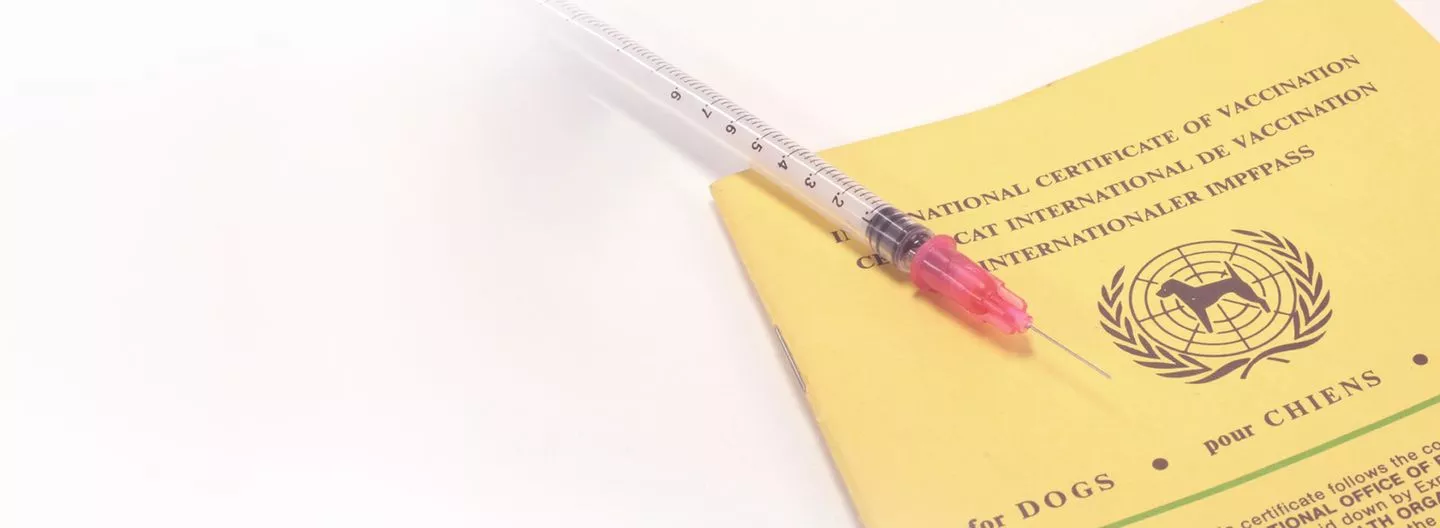


Every animal should be protected against certain pathogens such as rabies. Other vaccinations can be considered optional. You can find out more about this here.
After the so-called basic im munization, which provides resilient immunity, repeat vaccinations follow at regular intervals. In order to vaccinate only against relevant pathogens, vaccines are divided into core and non-core components, Here you will find an overview of the most important vaccinations and brief explanations.
On the other hand, every animal should be protected at all times:
This fatal viral disease is also transferable to humans. The infection occurs through the bite of a sick animal. There are non-specifc symptoms such as aggressiveness, increased salivation and paralysis. A rabies vaccination is compulsory on most trips with a dog, but is also generally recommended, since in the event of suspected rabies, the killing of an unvaccinated animal can be ordered.
This virus infection with a severe, sometimes fatal course is transmitted via faeces, urine or nasal secretions, Puppies, immunocompromised and unvaccinated dogs are particularly at risk. Typical symptoms include nasal discharge, cough, diarrhea and vomiting as well as muscle tremors and paralysis.
This bacterial disease is transmitted through feces, urine or contaminated puddles of water. Symptoms can include high fever, weakness, vomiting, diarrhea and jaundice, Infection with leptospires, which can also be transmitted to humans, can cause serious damage to the liver and kidneys and thus lead to organ failure and death.
This virus is transmitted via infected saliva, urine or feces. Symptoms include fever, loss of appetite, apathy, nasal and ocular discharge as well as vomiting and diarrhea. The infectious liver inflammation usually leads to chronic liver damage, and in an acute course it often ends in death. Due to the consequent vaccination, the disease rarely occurs, the highest risk of infection comes from unvaccinated or already sick puppies.
This highly contagious virus is transmitted through direct contact with an infected animal and through smear infections. Symptoms such as abdominal pain, loss of appetite, apathy, vomiting and mostly bloody, foul-smelling diarrhea appear. The associated high fluid loss must be treated immediately, ot herwise the disease can lead to the dog's death.
In contrast, animals should only be protected under certain circumstances:
Various types of viruses and bacteria are involved in this contagious upper respiratory in fection. Symptoms such as dry, loud coughing and choking appear. Dog schools, dog kennels and animal shelters pose a high risk of infection, as the disease can spread quickly through droplet infections in large numbers. Vaccination is therefore advisable if your dog often comes into contact with many of its kind.
To ensure adequate vaccination protection, please contact your veterinarian. This can give you information about whether a revaccination is necessary. Before traveling with your dog, you should also have the up-to-date vaccination protection and other entry requirements checked.